
views
Taking Care of Swimmer's Hair Right After a Swim

Begin treating your hair as soon as you get out of the pool. Chlorine – which is used to kill bacteria in pool water and keep it swimmable – will strip the natural oils that usually help protect your hair from damage associated with dryness and daily wear. The goal of swimmer's hair treatment is maintaining a healthy level of moisture in your mane. The first must-do step is to shower immediately after your swim. Chemicals are beginning to damage your hair as soon as you jump in. Fight back as soon as you get out of the pool! For added resilience, use moisturizing conditioner and shampoo. Massage moisturizing hair products into your hair and scalp to ensure complete coverage of your hair. A moisturizing “leave-in” conditioner can help making brushing go more smoothly.
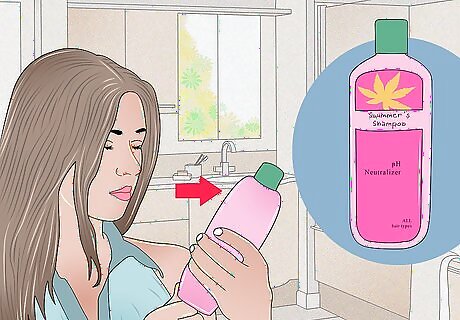
Consider a swimmer-specific shampoo. If your hair sometimes changes colors – blondes may go a bit green, and darker-haired people may see their hair lighten in color – there are shampoos designed to specifically fights this effect. Mineral deposits such as copper are actually the culprits associated with color changes in your hair. There are products specifically designed to rid your hair of copper before it sets in, such as chelating shampoos that lower the pH of your hair and remove the copper.
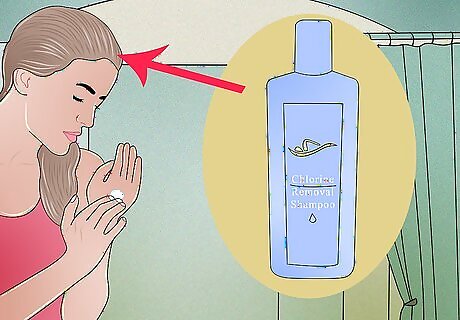
Be careful with strong hair products. Even hair products meant to treat swimmer's hair may dry your hair out when you first begin to use them. Chlorine, for all its disinfectant glory, will bond to your hair, so you may need more than your run-of-the-mill cleaning products to get it out. Use only enough hair product to get results, and don't use strong shampoos too frequently. Be sure to use a moisturizing conditioner following the use of a potentially harsh shampoo.
Treating Swimmer's Hair with Natural Remedies
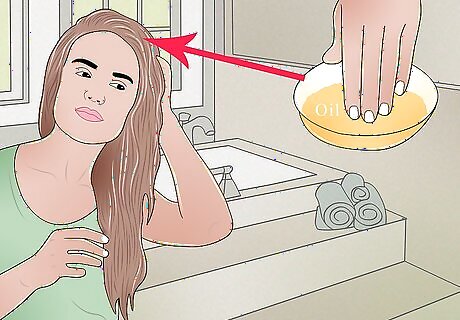
Use olive oil to treat your hair. Especially helpful in treating hair damaged by chlorine, olive oil adds substantial moisture to your hair and almost immediately ups its softness and shininess. Pour ½ a cup of olive oil into a bowl that you can safely microwave, and heat it for 20 seconds. Using a towel to protect your clothing (or while wearing your birthday suit), massage warm oil into your hair a bit at a time. Continue dabbing your fingers into the bowl and coating your hair until every strand is covered. Leave the olive oil in your hair for 30 minutes before shampooing and conditioning as usual.
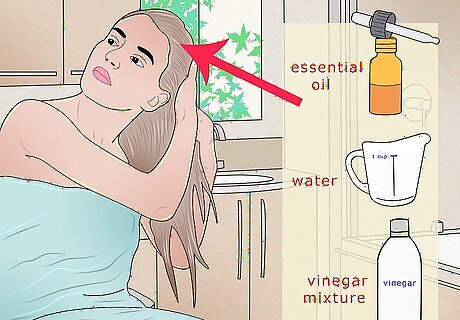
Try vinegar. Vinegar is especially effective in increasingly shine and in removing buildup from your hair that may have left behind by pool chemicals. Vinegar will also help diminish chemical smells and even help prevent discoloration of your hair. Make a vinegar treatment by putting 2 cups of cider vinegar into a glass receptacle for which you have a lid. Add 10 drops of an essential oil of your choice and gently shake the glass to mix. Cap the solution and allow it to sit and blend for at least 24 hours. Add ½ a tablespoon of the vinegar mixture to 1 cup of water. Simply rinse pool-damaged hair following your next shampoo and allow the mixture to soak in.
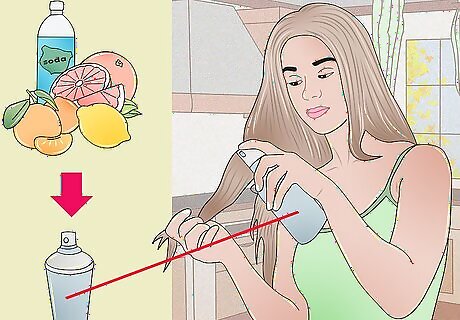
Try a vitamin C hair treatment. A vitamin C and club soda tonic will remove chlorine and other buildups from your hair. Mix a ¼ cup of club soda and a ¼ cup each of grapefruit, orange, and lemon juices in a spray bottle. If your hair reaches beneath your shoulders, up these ingredients by an 1/8th cup each. Add a drop or two of sage essential oil for your bottle for extra vitality and sheen with your restore. Spray the mixture onto wet hair. (If you just swam, rinse in clean water first.) Comb the spray through your hair until strands are evenly covered. Leave your hair alone for about three minutes before shampooing and conditioning as usual. For supremely damaged hair, repeat this treatment every two to three weeks. You can also purchase the equivalent citrusy product pre-mixed and packaged.
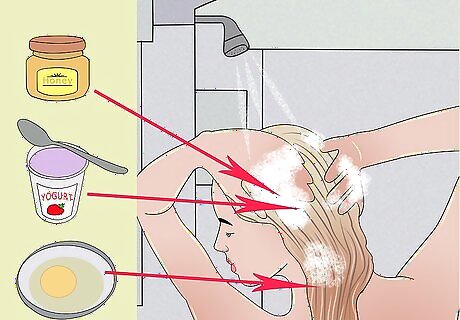
Give your hair the raw egg treatment. Since the protein content of egg is especially high, this will help strengthen your hair shafts and make your mane shiny and silky to the touch. Crack an egg into a bowl and mix it with a fork. Stir in a tablespoon of honey and a tablespoon of plain yogurt. (Stir well!) Massage the mixture into a handful of clean, damp hair. Build a recovery chamber for your hair by covering it all with a plastic shower cap. Allow the mixture to sit in damaged hair for 30 minutes before washing with cool water.
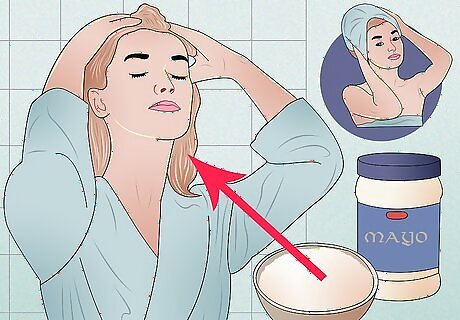
Lather your hair in mayo! Since mayo contains a lot of eggs and a lot of oil, mayonnaise provides the protein that can help strengthen your hair, and the moisture that can help repair a dried out hairdo. Prep your hair for the mayo treatment by wetting it with warm water and wrapping your hair in a towel prior to application. Put about 2 tablespoons of mayo in a bowl and use this to liberally apply mayo directly to your scalp, massaging it in with your fingertips. Working your way from the scalp, coat all of your hair. Wrap your hair in a plastic bag or shower cap and leave the mayo in your hair for 20 minutes before rinsing thoroughly.
Preventing Swimmer's Hair
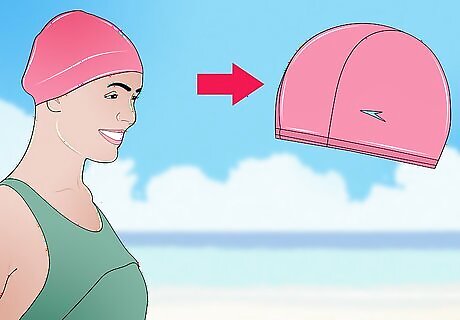
Protect your hair while you swim! A swim cap is a great way to limit your hair's exposure to harmful pool chemicals, though you must both put on and take caps off carefully. Either way, wet your hair with clean water before entering a pool (even if you're going to wear a cap). To up your defenses, take a quick shower, put some conditioner in your hands right after and run them through your hair before a swim. Saturate your hair with water to slow (and hopefully prevent) the absorption of harmful chemicals such as chlorine.
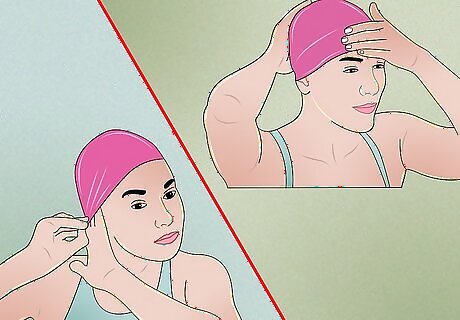
Take care when putting on and removing your swim cap. If you wear a swim cap, be very careful taking it on and off, as the grip of the cap on your hair can easily pull strands out of your scalp. Gather your hair close to your head, twisting and tying up long hair into a loose bun on top of your head. Place your hands inside the cap, with your palms vertical and your fingers spread. Let the front inside edge of the cap catch your forehead as you slowly lower the cap over your hair and around the back of your head. If you have trouble with latex caps pulling your hair, switch to a Lycra of silicone cap. These materials will pull your hair much less. Be gentle adjusting and removing your cap. If repositioning, do so very gently. When removing, start at either the front or back edge, pull out and away from your head, and keep pulling out and away from your head as you rotate your hand around your head.
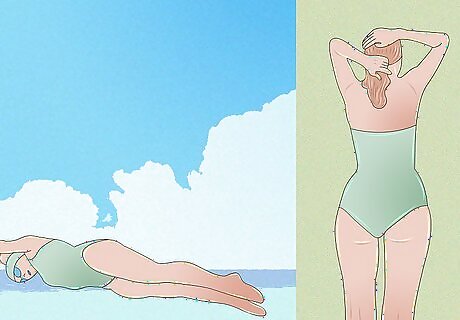
Coat your hair before you jump in. The best treatment is prevention. Oil and silicone-based products are best. The realm of oils includes natural products and remedies, while silicone can help calm frizziness and provide extra protection if you aggressively style your hair when out of the pool. Coconut oil, applied liberally, is a great pre-swim option. Massage it into clean, damp locks. Use a conditioner or leave-in treatment with silicone polymers such as dimethicone or cyclomethicone. Wetting and coating your hair will also make it easier to put on a swim cap without damaging your hair. Some products even help protect your hair from sun and salt as well as chlorine – so wherever you're swimming, you'll be covered.




















Comments
0 comment